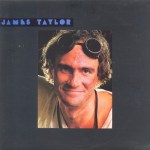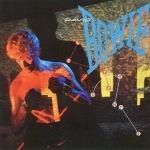
More of the Music of James Taylor
Reviews and Commentaries for the Music of James Taylor
If you have a Hot Side One for One Man Dog you will know it in a hurry. The guitars and congas will leap out of your speakers at the beginning of One Man Parade. If they don’t, forget it, move along to the next copy and keep going until you find one in which they do.
There are plenty of other, more subtle cues to separate the White Hots from the Supers and Hots, but if the sound doesn’t come to life right from the get go, it never will.
This reminded me of another record that can be judged by the jump-out-the-speaker energy of it congas, Teaser and the Firecat. An excerpt:
The congas are what drive the high-energy songs, songs like Tuesday’s Dead and Changes IV.
Here is how we stumbled upon their critically important contribution.
We were listening to one of the better copies during a recent shootout. The first track on side one, The Wind, was especially gorgeous; Cat and his acoustic guitar were right there in the room with us. The transparency, tonal neutrality, presence and all the rest were just superb. Then came time to move to the other test track on side one, which is Changes IV, one of the higher energy songs we like to play.
But the energy we expected to hear was nowhere to be found. The powerful rhythmic drive of the best copies of the album just wasn’t happening. The more we listened the more it became clear that the congas were not doing what they normally do. The midbass to lower midrange area of the LP lacked energy, weight and power, and this prevented the song from coming to LIFE the way the truly Hot Stamper pressings do.
The sound of the congas on many of the records we audition is a good test for some of the most important qualities we listen for: energy, rhythmic drive, presence and weight.
Congas, like drums and pianos, are good for testing records. If these instruments get lost in the mix, or sound smeary or thin, it’s usually fairly easy to hear those problems if you are listening for them. Most of what you will read on this blog is dedicated to helping you do that.
The richness of analog is where much of its appeal lies. Lean drums, congas and pianos are what you more often than not get with CDs.
These three instruments are also exceptionally good for helping you to choose what kind of speakers to buy. (We recommend big ones with dynamic drivers.)
Warner Bros. House Sound
One Man Dog, like many early WB pressings, has a tendency to be dull and opaque. (Most side twos have a real problem in that respect.) When you get a good one, with more of an extended top end, it tends to come with much more space, size, texture, transparency, ambience and openness.
Of course it does; that’s where a lot of that stuff is, up high.
 Which of these copies has Hot Stampers? That’s easy – just check the notes!
Which of these copies has Hot Stampers? That’s easy – just check the notes!
Of course this is far too many copies to have in one shootout, so some quick and dirty triage is the only way to get this group down to a manageable number, typically ten to twelve.
Rolling Stone Review (excerpts)
By Jon Landau
January 18, 1973
By recording in his house, he seems to have gotten a freer instrumental sound than before, although Russ Kunkel’s drums regrettably lack the depth of tone found on earlier recordings. As if by compensation, either Danny Kortchmar is finally coming into his own with his jazz-soul-folk-rock guitar playing or I’m just hearing him better. More importantly, Taylor turns in his best singing performance, running through the songs with fire, force, and enthusiasm, the qualities most notable by their absence on earlier recordings.
(more…)
 The Music of Tchaikovsky Available Now
The Music of Tchaikovsky Available Now

 There is a blast of brass at the end of Catacombs that is so big and real, it makes you forget you’re listening to a recording. You hear every brass instrument, full size, full weight. I still remember the night I was playing the album, good and loud of course, when that part of the work played through. It was truly startling in its power.
There is a blast of brass at the end of Catacombs that is so big and real, it makes you forget you’re listening to a recording. You hear every brass instrument, full size, full weight. I still remember the night I was playing the album, good and loud of course, when that part of the work played through. It was truly startling in its power.  Production and Engineering
Production and Engineering






